|
The Chapel of Hathor - Vestibule and Hypostyle |
update:
03.01.2012
|
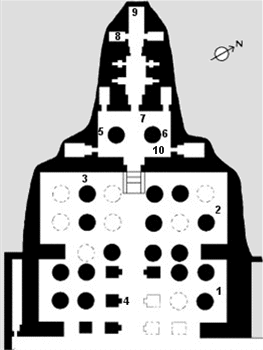
| Above the floor plan of the Chapel of Hathor with the
location of various scenes.
|
| 1 |
Hathor-Cow inside a shrine is suckling the royal child;
opposite wall:
Hathor-Cow in a shrine is suckling and
protecting the royal child |
| 2 |
Procession of Hathor with barques and soldiers; in the
northwestern corner Thutmosis III is shown with an oar before Hathor |
| 3 |
from left to right, left (south) of the entrance:
ritual run with bird before Hathor,
Hathor-Cow licking the hands of the queen;
right (north) of the entrance:
Hathor-Cow licking the hands of the queen,
ritual run "Seizing the Oar".
|
| 4 |
Pillars with Hathor-standards, columns with Hathor-heads |
| 5 |
Weret-Hekau offering a menat to Amun |
| 6 |
Hatshepsut before Hathor |
| 7 |
Royal titles on lintel and jambs, on both sides two Hathor-standards
(see photo below) |
| 8 |
Portraits of Senenmut |
| 9 |
Hatshepsut (replaced by Thutmosis III) embraced by Hathor,
both before Amun |
| 10 |
Hatshepsut (replaced by Thutmosis III) playing ball before Hathor |
|
|
According to Wysocki (1992) the purpose of the small room south of the
Chapel of Hathor is not known. |
| On both sides, on the northern as well as on the southern inner
wall of the vestibule scenes showing the Hathor-cow have partly survived. In
both scenes the Hathor-cow is depicted as a statue mounted on a socle inside a
shrine. On the northern wall the cow is shown leaving a shrine (see photo below; position 1) whereby the direction of motion is
traditionally.
The representation was revised however clearly, then under the Euter of the cow the kneeling
queen was deleted, who is position of the queen however still as " Schatten" in the relief recognizably.
Also the Zitzen of the Euters are to be still recognized still before the upper run of the left rear leg.
Originally the queen standing explained underneath the head is likewise only as " Schatten" in the relief recognizably.
|
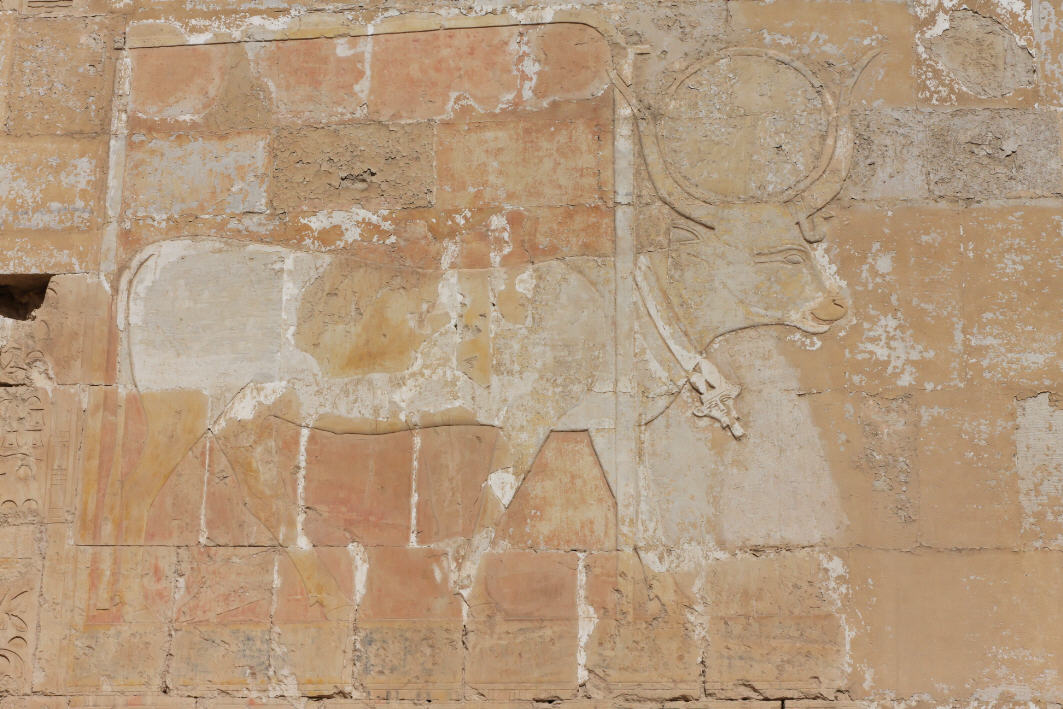
|
This representation was clearly changed - the kneeling queen suckling at the udder of the cow was deleted,
however, the former position of the queen still to bee seen as a "shadow" in the relief.
The teats of the udder are to be still recognized before the thigh of the left rear leg (see photo below).
Also the original figure the queen standing underneath the had been erased but is likewise recognizably as a "shadow" in the relief .
|
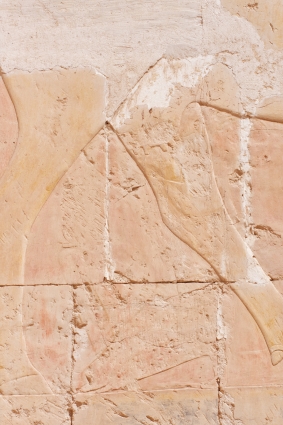
| The southern inner wall of the vestibule shows the Hathor-cow
again as a statue standing in a shrine and protecting (below the head of the cow) and suckling the royal child
(left below the cow the queen is depicted as a kneeling figure suckling at the
udder). |
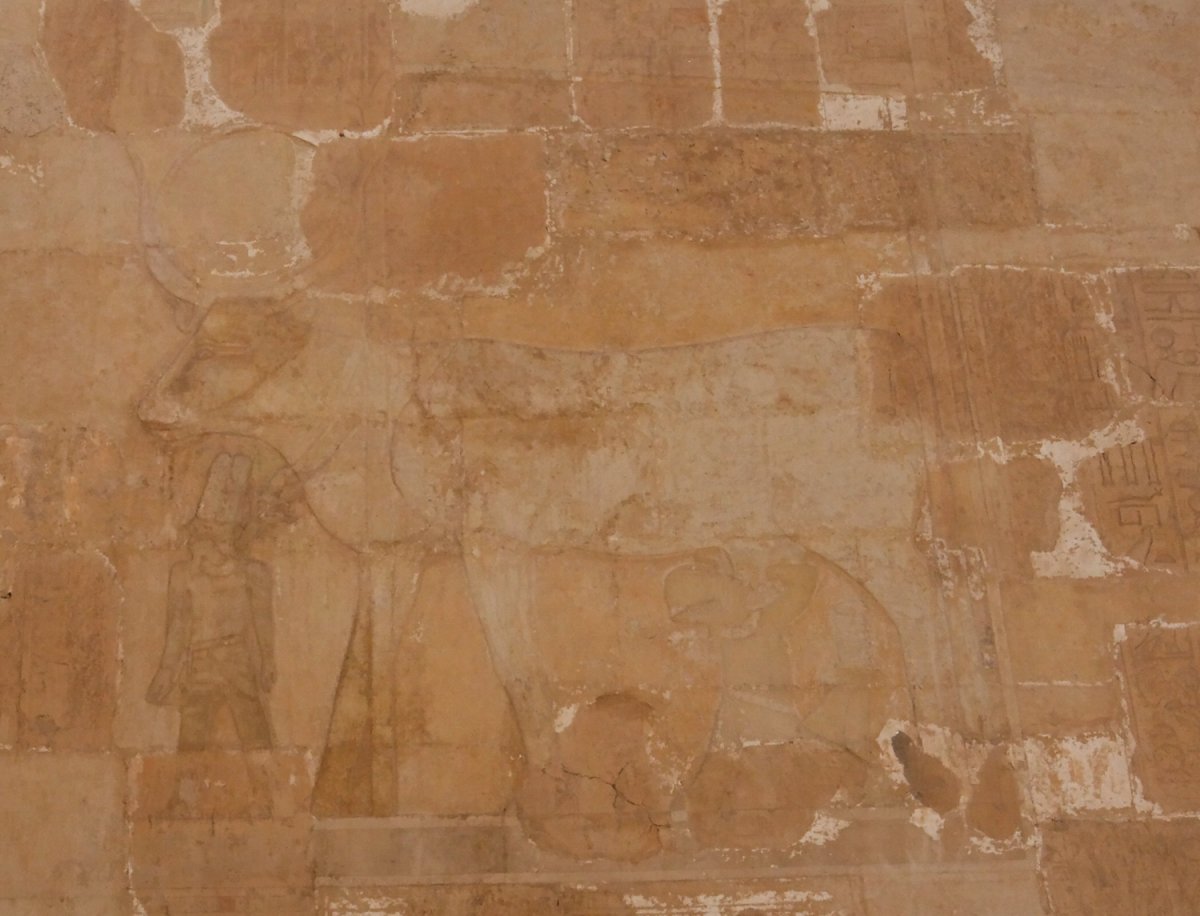
| The north-west corner shows the queen standing in front of
Hathor (see photo below; position 1), most likely the vertical line of text is to be read
as: "The King of Upper and Lower Egypt made her)?) monument for her(?) mother
Hathor, Lady of Dendera, she (!) did it [so that she is] given life like Ra." |
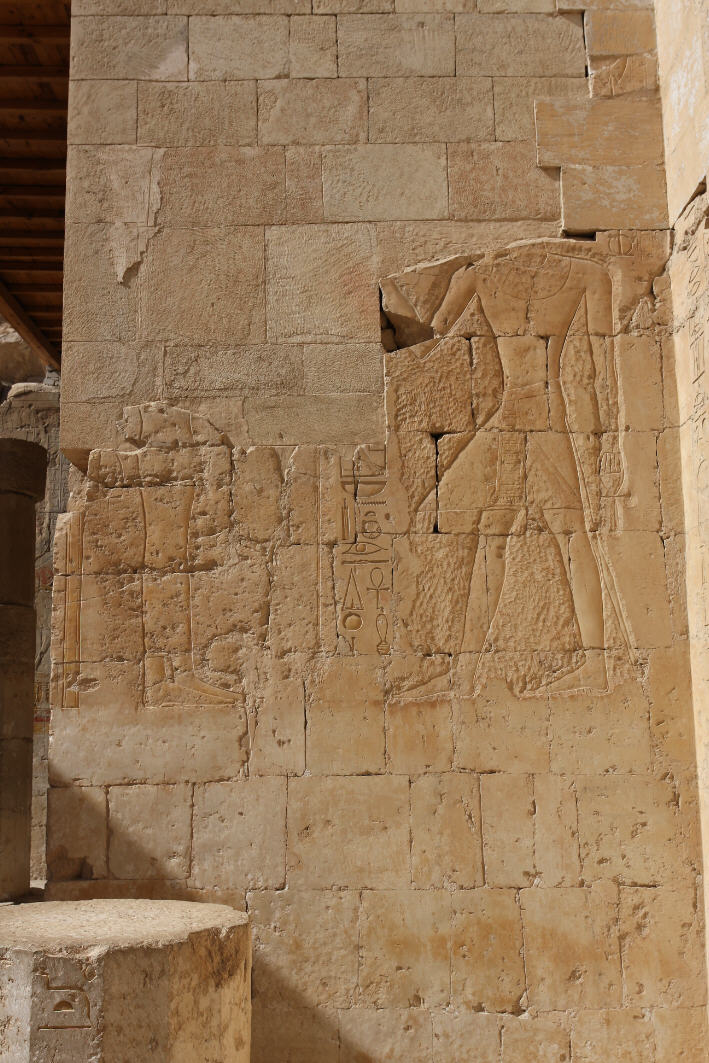
| Right of this representation on the wall which divides the open area into two parts,
i.e. on the north wall of the vestibule directly behind the Hathor-cow depicted in a shrine, there is
one of the inscriptions in which the queen dedicated this chapel to the goddess Hathor.
Symmetrically to it on the south wall, there are remainders of a another dedication text.
|
| The north wall of the hypostyle (position 2) impresses by well preserved
colored scenes. The eastern side of the wall shows the procession of the Hathor,
Lady of Dendera, to Deir el-Bahari, on the western side Thutmosis III is depicted standing in front of the goddess Hathor. |
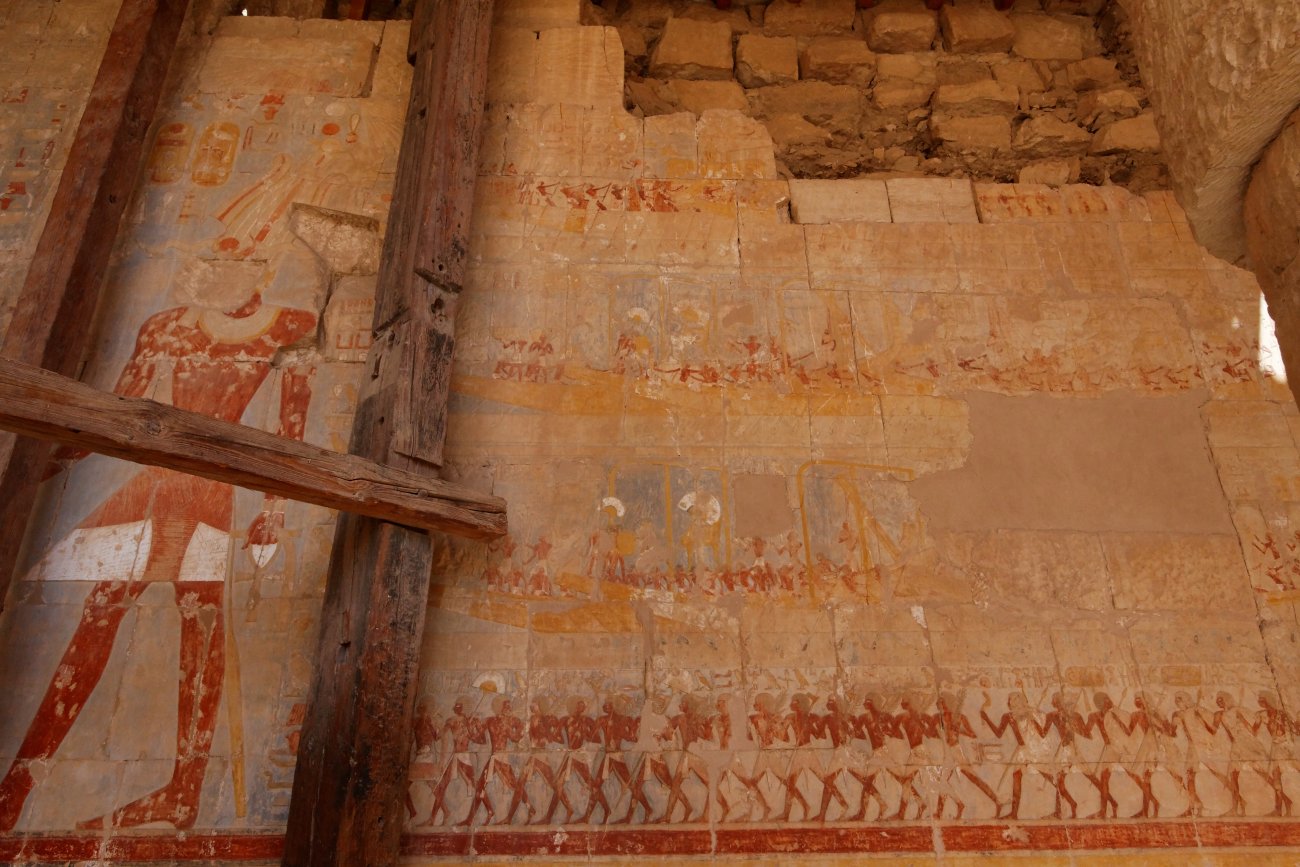
| The procession is divided into three rows with boats. Below
them a fourth row follows, in which soldiers are shown, who accompany the
procession of boots ashore. The soldiers are carrying arms, boughs of trees,
fans, sacred standards, and also take a lion along with them. The name of the
festival is given in a line of text above the boats: "... Hathor,
who is repeating birth...(..@wt-@r w@m-mswt....)". |
| A more detailed view shows that the soldiers had been selected
from at least three different troops. |
| In front soldiers from the royal ships are depicted as most
likely indicated by the military standard that shows a ship with a sphinx at the
bow and a seated king below the fan in the center of the boat. These soldiers
are armed with axes (see next but one detailed photo below). |
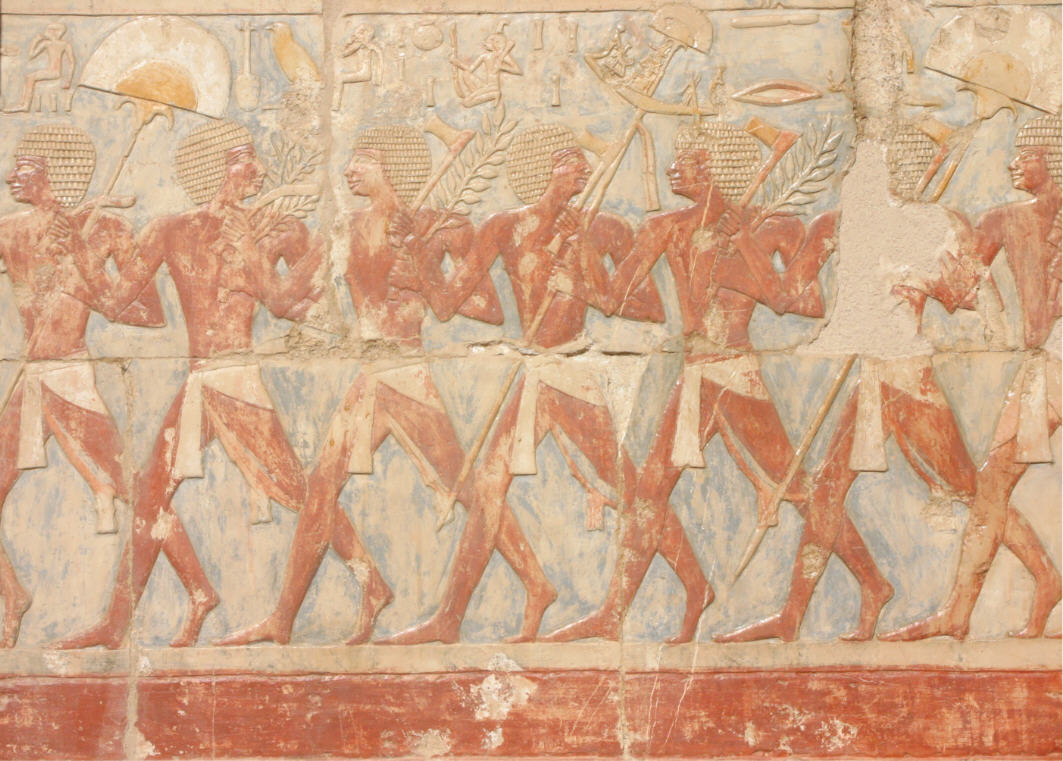
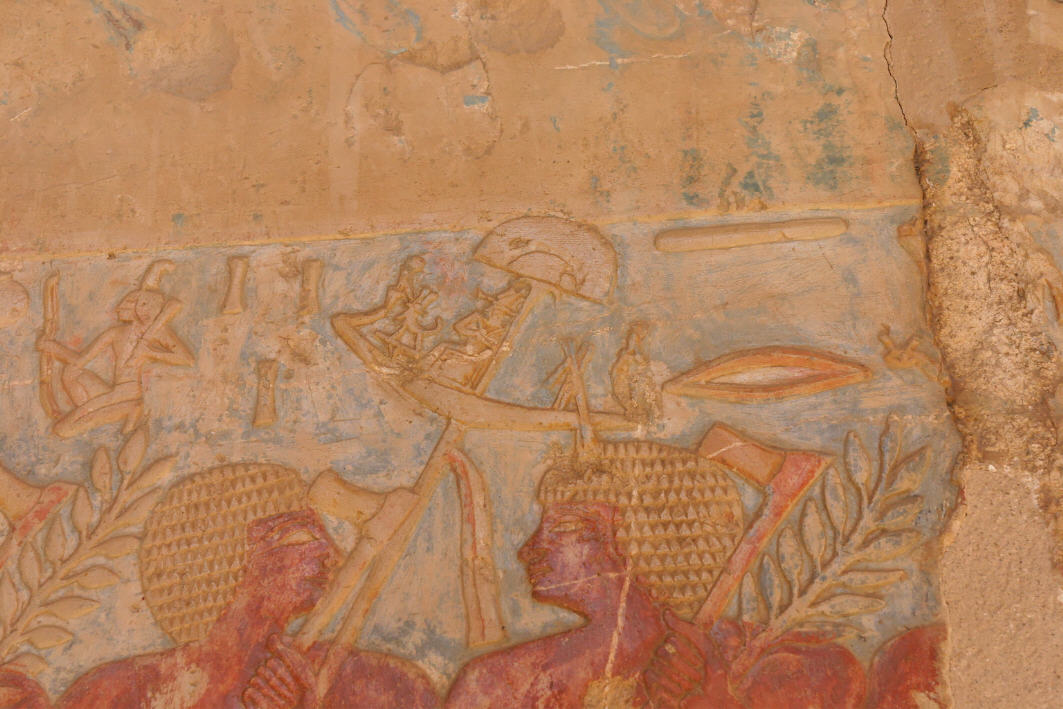
| Thereafter a group of soldiers is shown who belong to the royal
(body) guard of the king as indicated by their military standard with a royal
sphinx und the - partly destroyed - signs reading "Smsw (=
escort)". |
| This is the most heavily armed group, carrying a shield, spears
or axes or even a bow and arrows. |
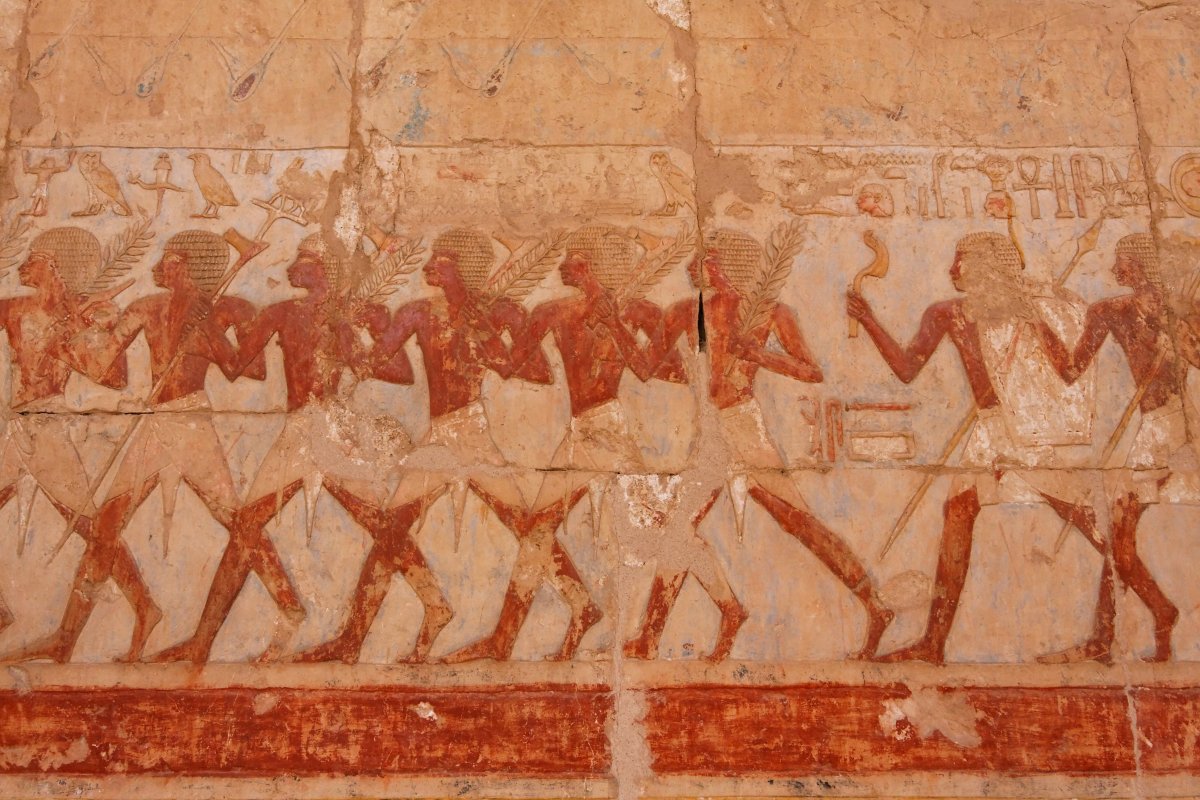
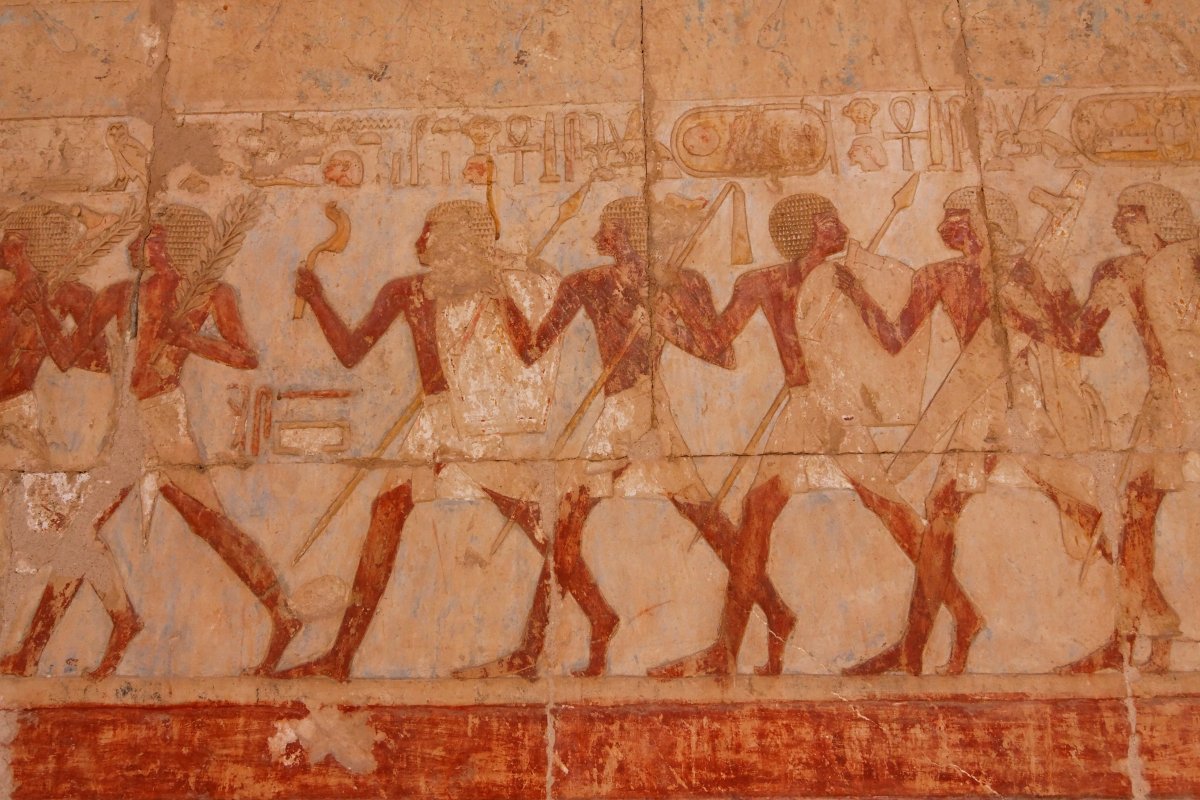
| The final group consists of Nubian soldiers armed with
boomerangs and leading a lion. |
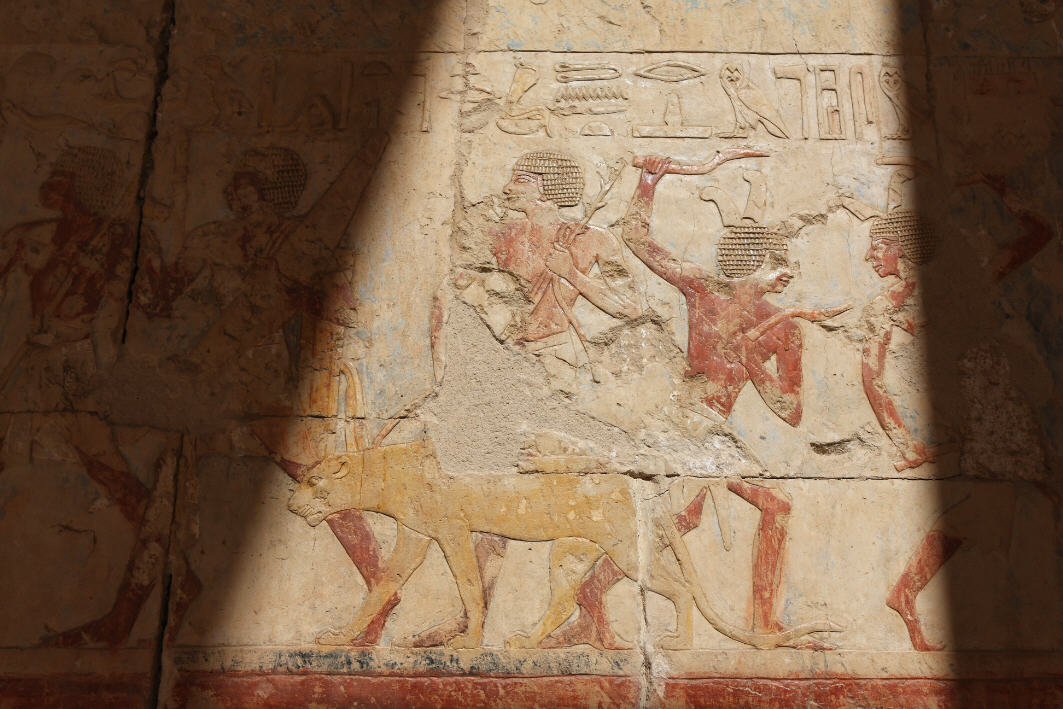
| Among the three rows of boats the upper row is very much damaged.
It contains two long boats, with a considerable number of men who row standing.
On both boats stand large shrines, adorned with draperies. Naville assumed that in one boat there were
the emblems of the goddess Hathor, in the other one those the queen. |
| The boats in the two lower rows are the escort. Here, as in the case of
the transportation of the obelisk transport depicted in the 1st portico, the queen is not
shown herself - her place is taken by her, in form of a fan (see photo below). |
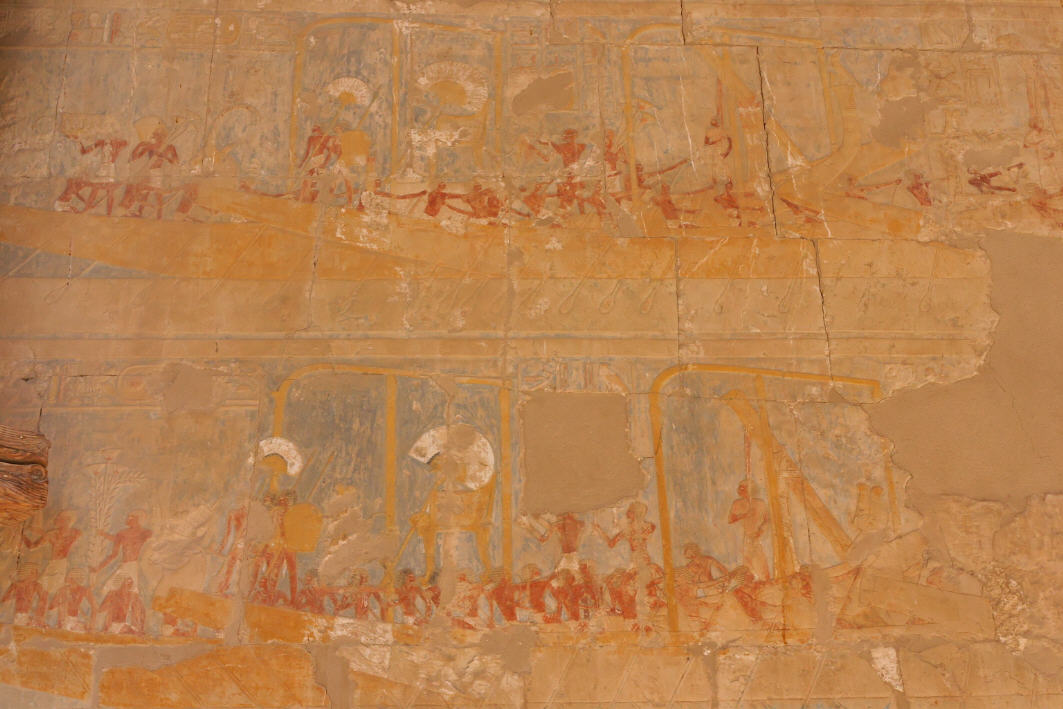
| The west side of the wall shows according to the inscription Thutmosis III worshipping (dwA nTr) the
goddess Hathor, lady of Dendera. It is noteworthy to say that his cartouche here
reads "Men-kheper-ka-Ra", the way his throne name was written during the early
years of the reign of Hatschepsut. |
| Thutmosis III has in his hand an oar. Thus, the scene might be
viewed in direct connection with the boat procession of the Hathor of Dendera to
the sanctuary at Deir el-Bahari shown just right of it. Already Kees (1977)
interpreted this scene as a representation of the first actions at the Chapel of
Hathor, which are accomplished after the arrival of the boat procession. |
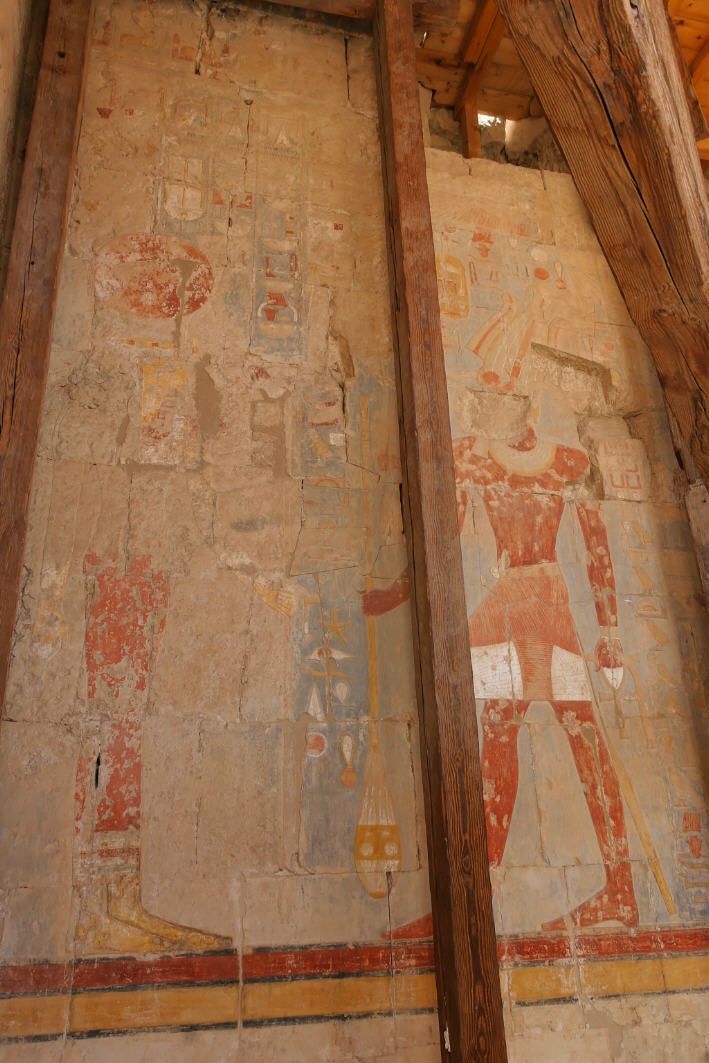
| The west wall of the hypostyle hall (position 3) shows symmetrically
2 scenes on both sides of the entrance into the chapel. In each case
on the right and left of the entrance a scene shows the Hathor cow licking the
hand of the queen (changed on Thutmosis II) who shown sitting under a canopy on
a throne. |
| On the northern and southern end of the west wall Hatshepsut
(cartouche changed to Thutmosis II) is depicted performing a ritual run before
the goddess Hathor. |
| The scene in the in the southern corner shows a ritual run with
a bird (next photo). |
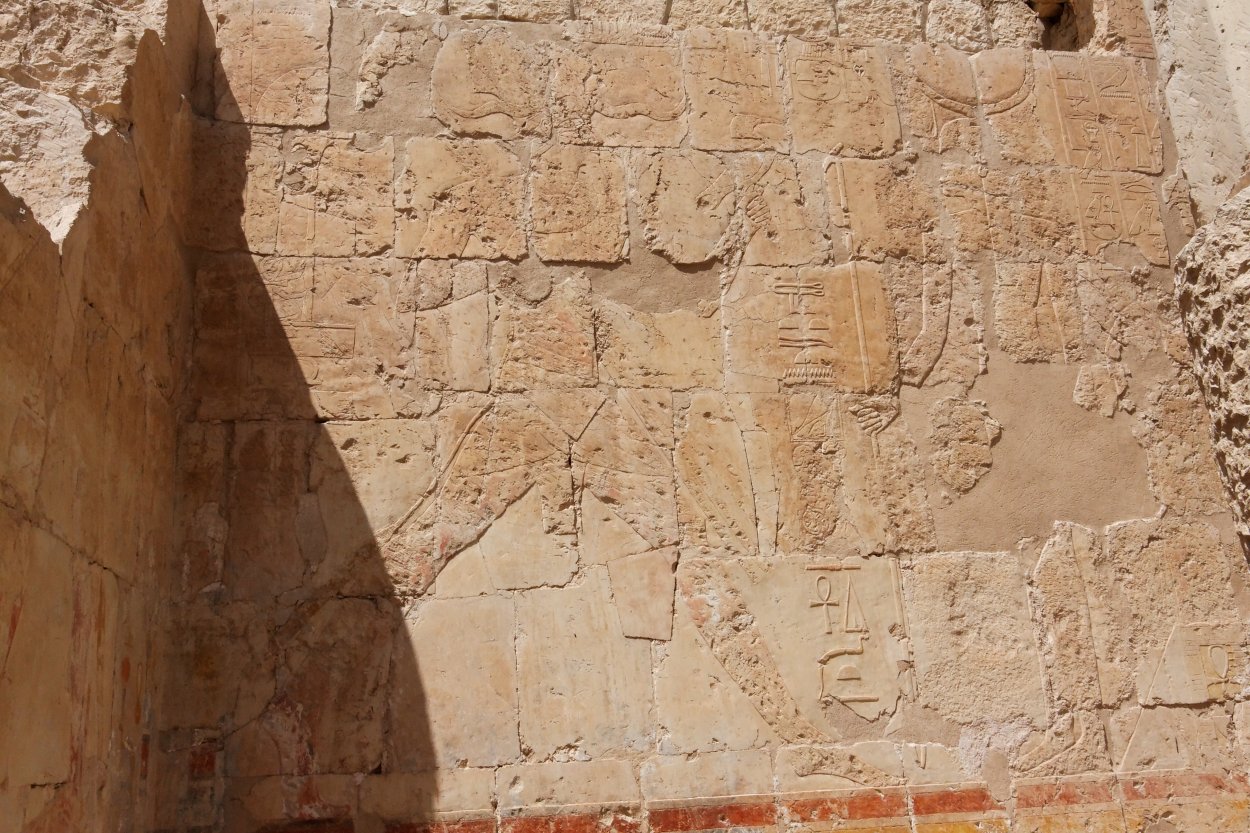
| Hatshepsut, performing a ritual run with a bird before Hathor (right, outside the part shown).
Hatshepsut wears an Atef-crown, three staffs in her right, and an Ach-bird
in her left hand. |
| The following photo shows the scene between the ritual run with the bird
and the entrance to the chapel.
Just like the mirror-image right of the entrance the Hathor cow licks the hand of
the queen (cartouche changed to Thutmosis II.) who is shown sitting under a
canopy on a throne, |
| In contrast to the corresponding scenes at the outer sides of
the facade here the queen wears in both scenes on the west wall of the hypostyle
hall an atef-crown. |
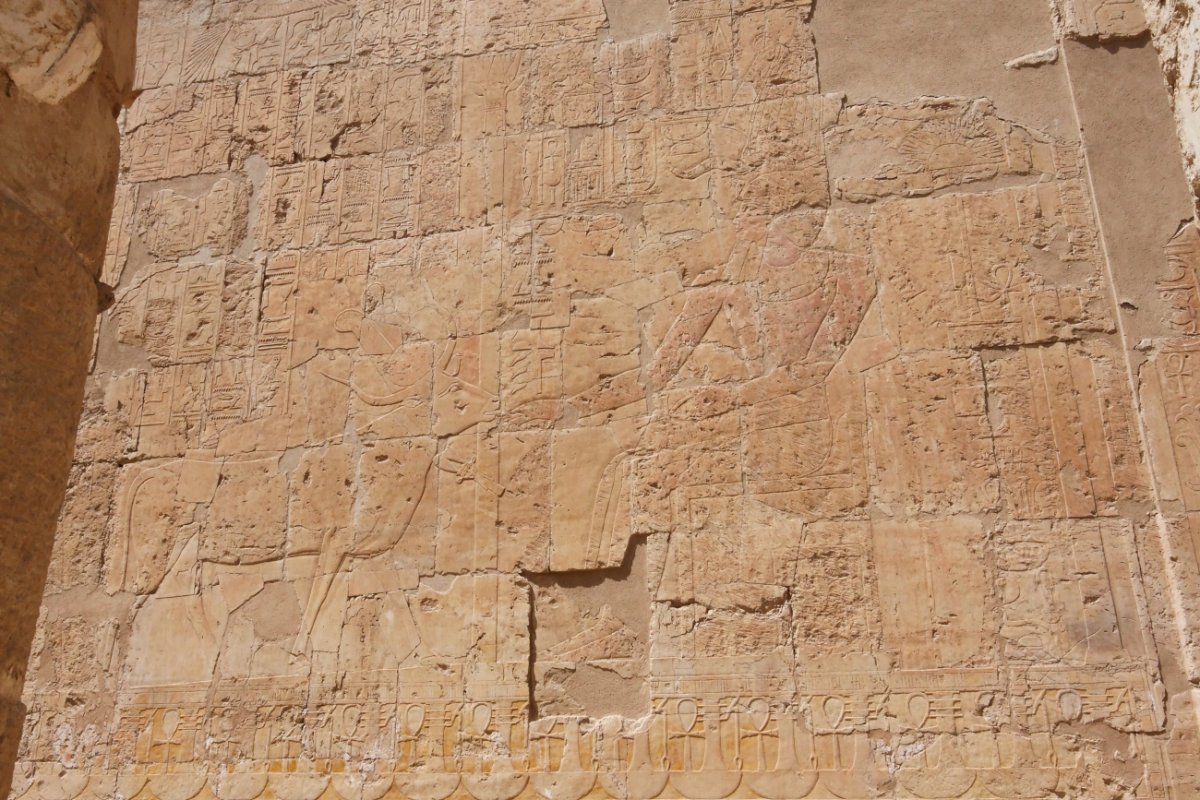
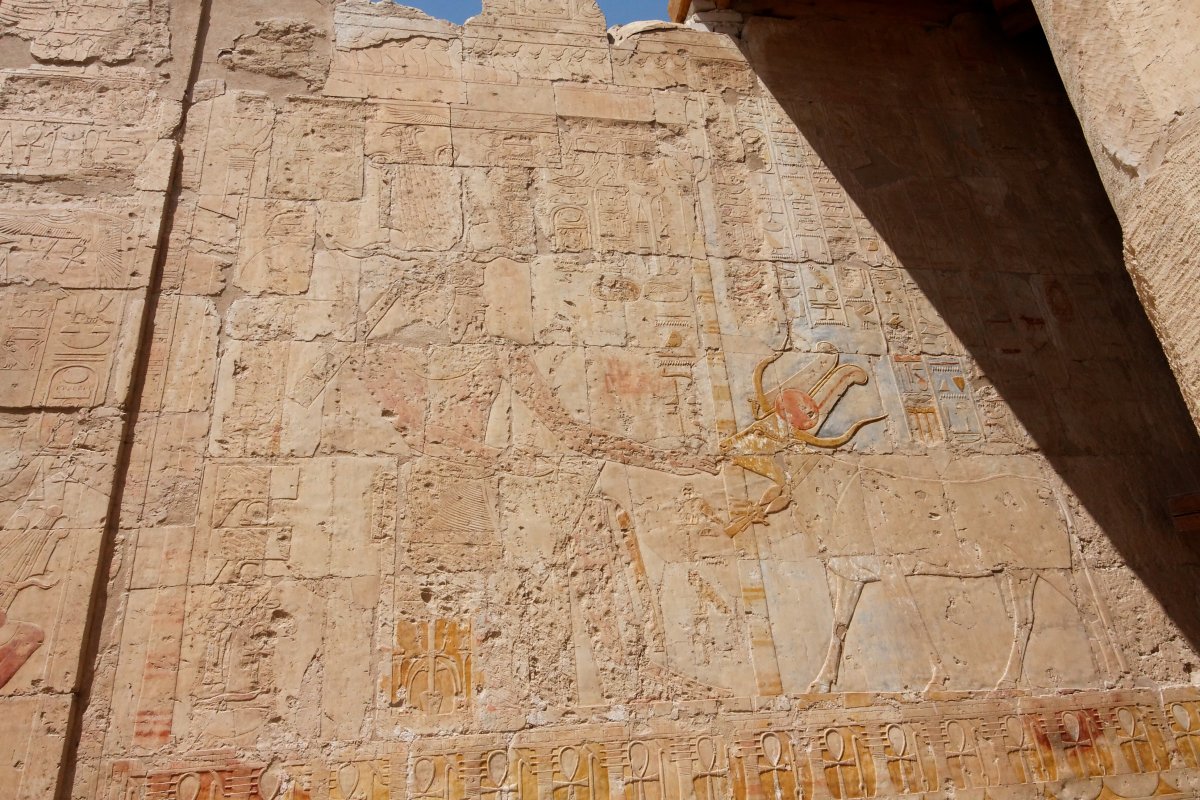
| The last scene on the western wall of the hypostyle shows a ritual run of the king who is "Seizing the Oar" (next
photo). |
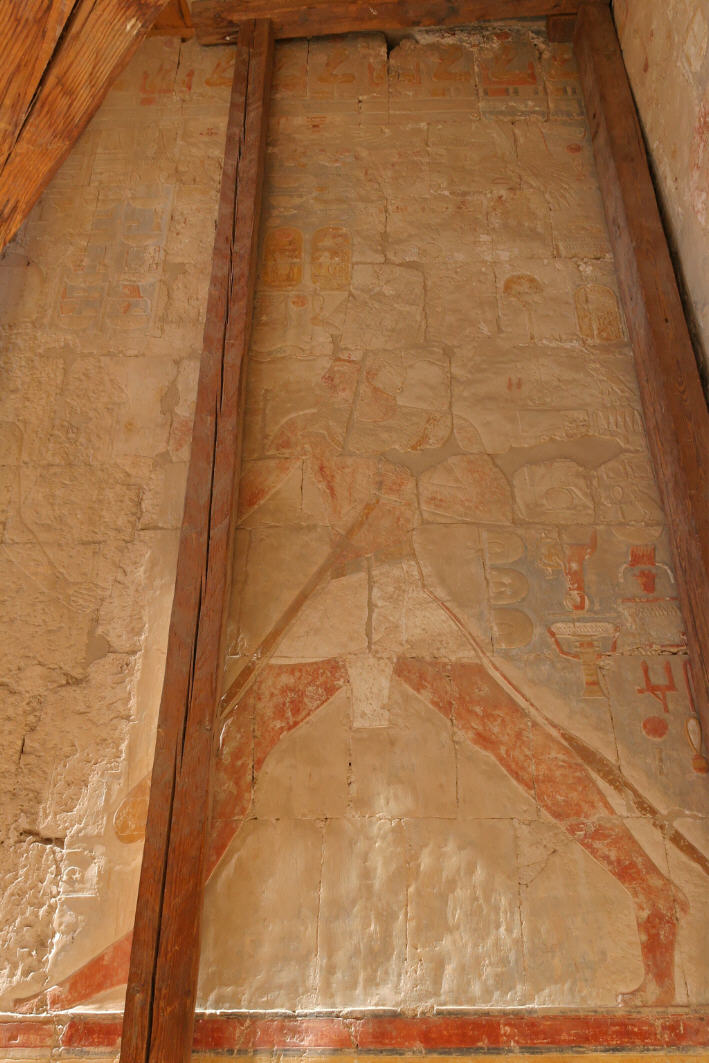
| The next photo shows the entrance to the speos.
|
| The horizontal lines directly above the doorway show on
the names and titles of Thutmosis II. The most upper line shows the wing
sun-disk from Behedet. |
| On the right door-jamb appears Thutmosis III,
on the left one Hatshepsut (changed to Thutmosis II).
|
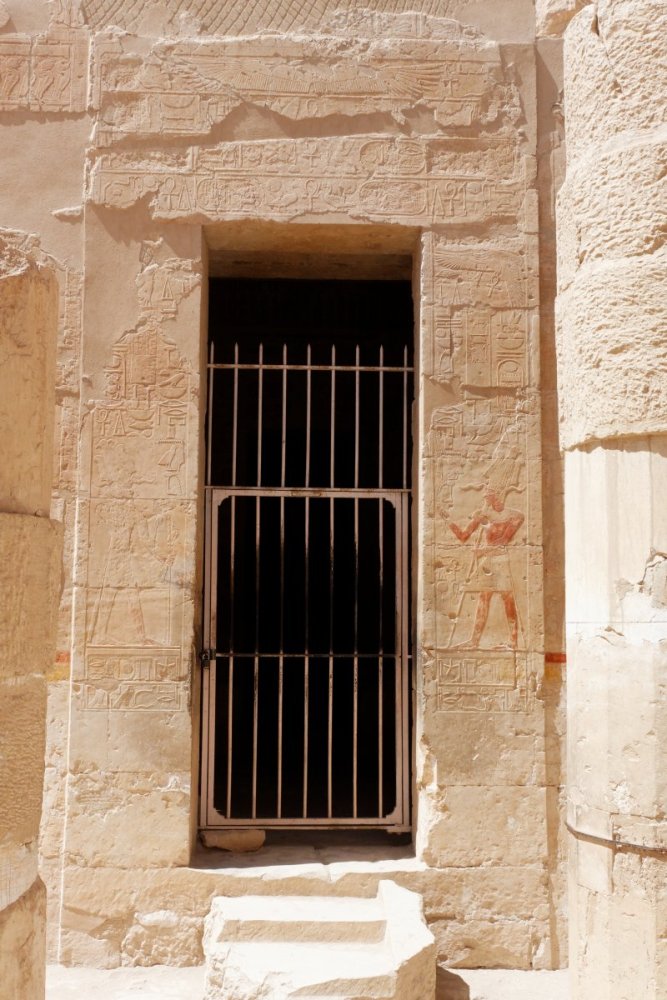
| The following two horizontal lines right (see photo below) and left of the
doorway contain - covered by a "pt"-sign - the name of the doorway "The door of Hatshepsut (changed to Thutmosis
II), who brought DfAw-victuals to the house of Hathor [= sbA
aA-xpr-n-Ra sart
DfA
m pr
@wt-@r]" (Grallert, 2001).
|
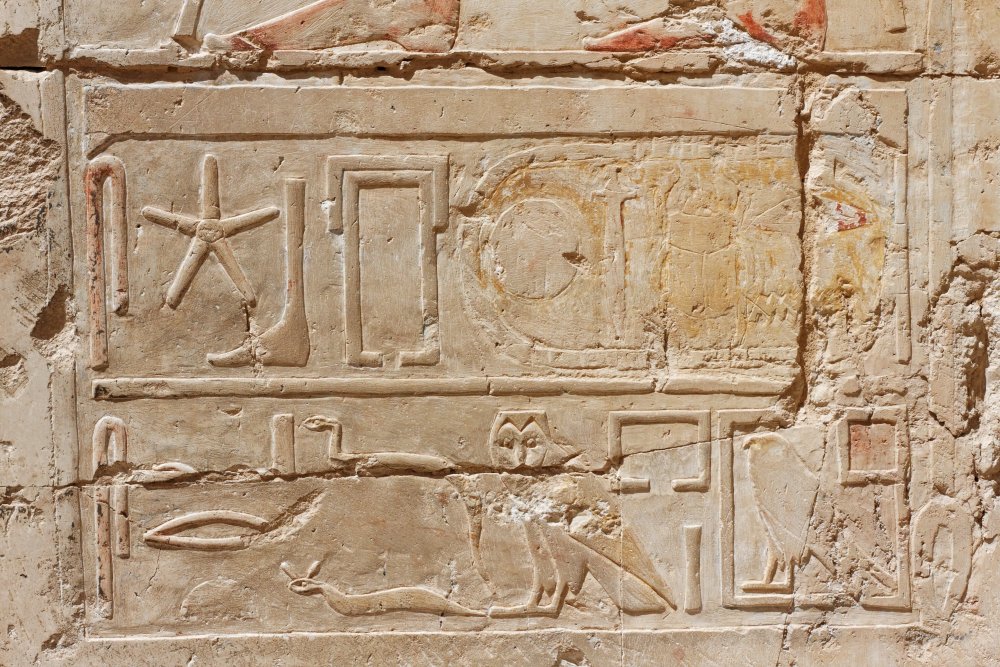
|


















